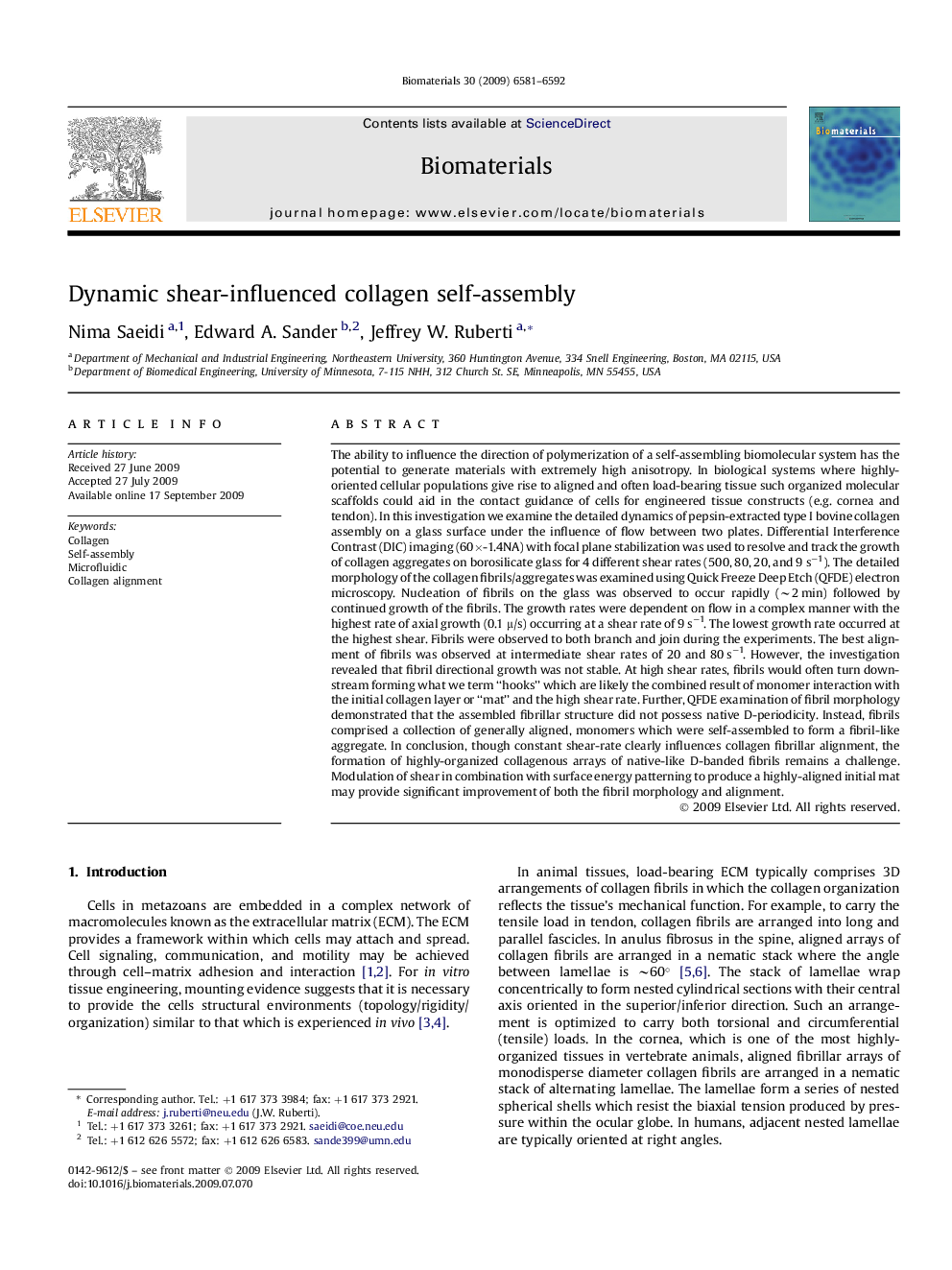| کد مقاله | کد نشریه | سال انتشار | مقاله انگلیسی | نسخه تمام متن |
|---|---|---|---|---|
| 10094 | 664 | 2009 | 12 صفحه PDF | دانلود رایگان |

The ability to influence the direction of polymerization of a self-assembling biomolecular system has the potential to generate materials with extremely high anisotropy. In biological systems where highly-oriented cellular populations give rise to aligned and often load-bearing tissue such organized molecular scaffolds could aid in the contact guidance of cells for engineered tissue constructs (e.g. cornea and tendon). In this investigation we examine the detailed dynamics of pepsin-extracted type I bovine collagen assembly on a glass surface under the influence of flow between two plates. Differential Interference Contrast (DIC) imaging (60×-1.4NA) with focal plane stabilization was used to resolve and track the growth of collagen aggregates on borosilicate glass for 4 different shear rates (500, 80, 20, and 9 s−1). The detailed morphology of the collagen fibrils/aggregates was examined using Quick Freeze Deep Etch (QFDE) electron microscopy. Nucleation of fibrils on the glass was observed to occur rapidly (∼2 min) followed by continued growth of the fibrils. The growth rates were dependent on flow in a complex manner with the highest rate of axial growth (0.1 μ/s) occurring at a shear rate of 9 s−1. The lowest growth rate occurred at the highest shear. Fibrils were observed to both branch and join during the experiments. The best alignment of fibrils was observed at intermediate shear rates of 20 and 80 s−1. However, the investigation revealed that fibril directional growth was not stable. At high shear rates, fibrils would often turn downstream forming what we term “hooks” which are likely the combined result of monomer interaction with the initial collagen layer or “mat” and the high shear rate. Further, QFDE examination of fibril morphology demonstrated that the assembled fibrillar structure did not possess native D-periodicity. Instead, fibrils comprised a collection of generally aligned, monomers which were self-assembled to form a fibril-like aggregate. In conclusion, though constant shear-rate clearly influences collagen fibrillar alignment, the formation of highly-organized collagenous arrays of native-like D-banded fibrils remains a challenge. Modulation of shear in combination with surface energy patterning to produce a highly-aligned initial mat may provide significant improvement of both the fibril morphology and alignment.
Journal: Biomaterials - Volume 30, Issue 34, December 2009, Pages 6581–6592